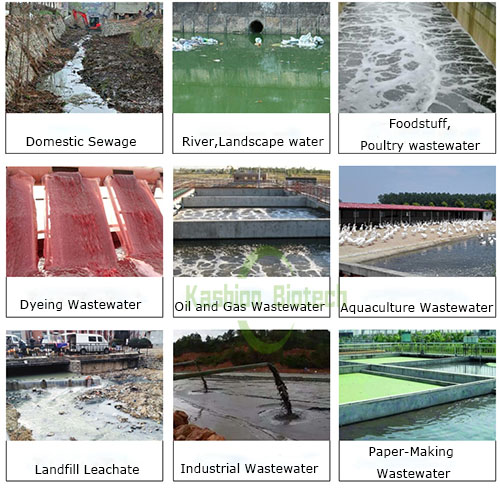
Home Products Sewage Treatment Bacteria Petrochemical Wastewater Treatment Degradation microorganism bacteria treat
(1). Sludge load and sludge age
Because biological nitrification is the premise of biological denitrification, only good nitrification, can obtain stable denitrification. Therefore, the denitrification system must also use low or ultra-low load and high sludge age.
(2). Internal and external reflux ratio
The external reflux of the biological denitrification system is smaller than that of the pure biological denitrification system, which is mainly because most of the nitrogen in the inflow sewage has been removed, and the concentration of NO3--N in the secondary sedimentation tank is not high. Relatively speaking, the risk of sludge floating due to denitrification in the secondary sedimentation tank is very small. On the other hand, the sedimentation rate of sludge in denitrification system is faster, and the reflux ratio can be reduced to prolong the residence time of sewage in the aeration tank on the premise of ensuring the required concentration of returned sludge.

(3) Denitrification rate
Denitrification rate refers to the amount of nitrate denitrified per unit of activated sludge per day. The denitrification rate depends on temperature and other factors, with typical values ranging from 0.06 to 0.07gNO3--N/gMLVSS×d.
(4) Dissolved oxygen in the anoxic zone
For denitrification, DO is expected to be as low as possible, preferably zero, so that denitrifying bacteria can carry out denitrification with "full strength" and improve denitrification efficiency. However, from the actual operation situation of the sewage treatment plant, it is still difficult to control the DO in the anoxic zone below 0.5mg/L, which affects the biological denitrification process and the total nitrogen index of the effluent.
(6) PH
Denitrifying bacteria are less sensitive to the change of pH than nitrifying bacteria. They can carry out normal physiological metabolism in the range of pH 6-9, but the better pH range of biological denitrifying is 6.5-8.0.
(7) Temperature
Although denitrifying bacteria are not as sensitive to temperature change as nitrifying bacteria, denitrifying effect will also change with temperature change. The higher the temperature, the higher the denitrification rate. At 30 ~ 35℃, the denitrification rate increases to a large extent. When the temperature is lower than 15℃, denitrification rate will decrease obviously, and when it reaches 5℃, denitrification will tend to stop. Therefore, to ensure the effect of nitrogen removal in winter, it is necessary to increase SRT, increase sludge concentration or increase the number of operation tanks.
Name: Nicole Yu
Mobile:+86 17718148007
Tel:+86 17718148007
Whatsapp:8617718148007
Email:sales@kashionbiotech.com
Add:No.6, Zhanxi Road, Yaohai District, Hefei City, Anhui Province, China.